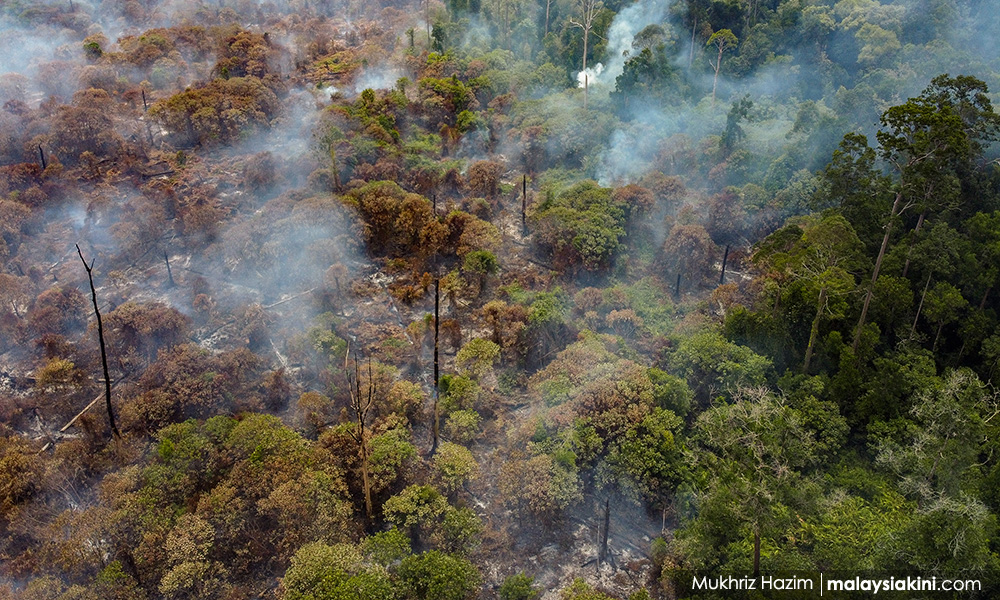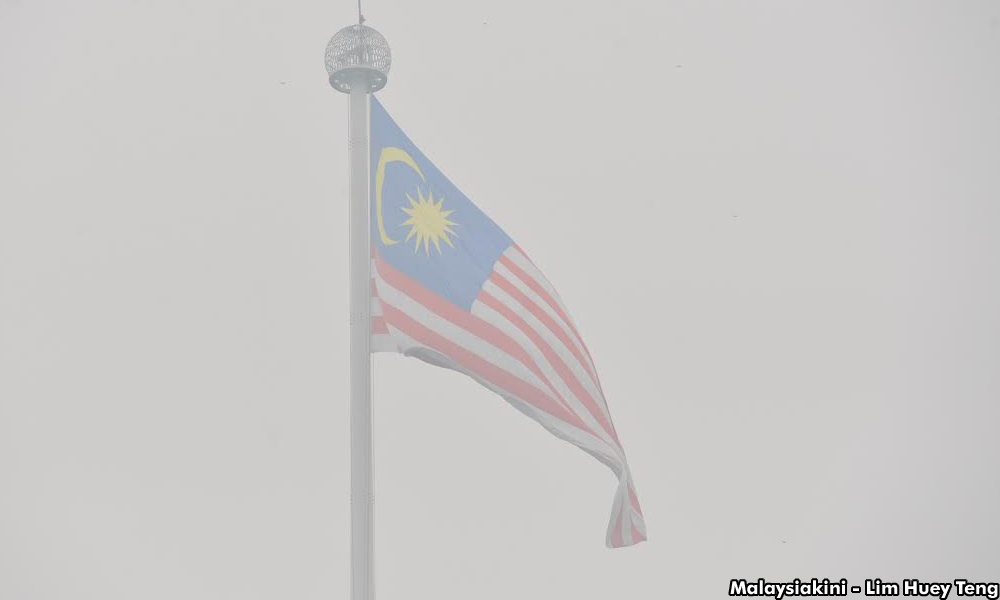During monsoon season, the Southeast Asian mainland and Borneo normally face the prospect of haze originating from the Indonesia archipelago.
The spectre of haze often hangs over Malaysia and Singapore for weeks and even months like a sword of Damocles.
This unhealthy haze is primarily made of the dissipated smoke from fires on Sumatra - one of the islands in Indonesia - from human activities via the cutting down of trees and the peatlands open burning.
When haze in Southeast Asia is said to have been caused by human activities, it immediately jogs one’s memory to the alarming statement made by James Hansen - a former Nasa scientist - who told a US congressional hearing that he could declare "with 99 percent confidence" that the sharp rise in global temperature was due to human activity.
The Asean population breathed a sigh of relief when its leaders agreed to sign a regional multilateral agreement known as the Asean Agreement on Transboundary Pollution (AATHP) on June 10, 2002, in Kuala Lumpur.
As far as the issue of transboundary harm arising from polluting activities either within states or transcending states is concerned, the spectre of this environmental mishap has been lingering in the minds of the international community. It is equally preoccupying international environmental law.
The Trail Smelter case is often referred to whenever the issue of transboundary pollution under international law crops up in the discussion.
The case involved transboundary pollution between the federal governments of Canada and the United States, which eventually contributed to establishing the doctrine of harm principle in the environmental law of transboundary pollution.
Apparently, this important doctrine of harm principle was subsequently adopted by Asean when its members decided to ink the AATHP.
Though the AATHP was signed in June 2002 it only entered into force in 2003. Its raison d'etre is to create a framework that will allow parties to reduce transboundary pollution and its associated harm.
Being a typical international legal instrument – just like other international treaties - sweet words are often embodied in such documents. Unfortunately what matters is the implementation of such lofty promises.
Article 3 of AATHP is a clear commitment to the fundamental principle of “no harm”.
This cornerstone principle of international environmental law pronounces that states are under an obligation not to cause harm to the environment of other states, or to the areas beyond their national jurisdiction.

Having signed and ratified the AATHP, there are several obligations being imposed on a country such as Malaysia as a party to the agreement.
By virtue of Article 4 of the AATHP, all the Asean countries - Malaysia included - have agreed to undertake and carry out certain statutory obligations under the agreement.
One of such obligations is to take legislative, administrative and/or other measures to implement their obligations under this agreement.
The fact that the word “shall '' is employed in Article 4 of the AATHP shows beyond doubt that all the parties to the agreement are fully aware of the legal implications of Article 4.
Such a vital article is not only binding upon a country like Malaysia, but it also carries some elements of mandatoriness.
Two decades since AATHP
Having agreed to sign and ratify the AATHP, Malaysia owes its international obligation to the world and to Asean at the very least, to take all the necessary and mandatory steps in legislating a law on transboundary haze pollution.
Though the AATHP was signed in 2002 "to prevent, monitor, and mitigate land and forest fires to control transboundary haze pollution through concerted national efforts, regional and international cooperation” and Article 4 (3) of the agreement obligates the state parties to the agreement to take legislative, administrative and/or other measures to implement their obligations under it, hitherto only Singapore has a domestic Transboundary Haze Pollution Act, enacted in 2014.
It is not really clear after almost 21 years since the AATHP was signed, countries like Indonesia and Malaysia - being the direct victim of transboundary haze pollution – still have failed to enact and pass a domestic Transboundary Haze Pollution Act.
As far as Malaysia is concerned, it was reported that the plan to table such a transboundary haze bill in 2019 was in the pipeline then but it was abruptly halted in 2020 following a change in government.
Still under review
The present minister of natural resources, environment and climate change was reported to have said that plans for the Transboundary Haze Act are still under review.
The minister also told the media that his ministry needs to take into account the challenges of obtaining evidence for prosecution purposes, which involves data related to security, and the sovereignty of the country responsible for the haze pollution.
He has also cited Singapore’s challenges in implementing its Transboundary Haze Pollution Act, which cannot be enforced against entities governed by other countries.
With the greatest respect to the minister, pessimists may have to take his words with a pinch of salt and in turn take the government to task on why it has taken extremely long for it to even review the plan of tabling the proposed legislation.

While it is quite reasonable for the relevant ministry to "take into account the challenges of obtaining evidence for prosecution purposes, which involves data related to security and the sovereignty of the country responsible for the haze pollution" as rightly pointed out by the minister, such challenges, with the greatest respect, however, should not be taken as a stumbling block for the government to legislate a much-awaited special legislation on transboundary haze.
After all, such important legislation has been long overdue.
If at all there are challenges as mentioned above, such challenges would be at the implementation level, namely for the purposes of effectively executing the law.
Alas, the country has not even reached that level yet when the necessary law has yet to exist.
Be that as it may, I am afraid such an excuse may not be easily accepted by many as a justification for not legislating such a law.
In implementing any law, any government should not expect such a new law to be absolutely perfect before it decides to enact it.
While it is good to carry in-depth review before legislating any new law, we submit review would be an ongoing process.
What is badly required now is for Malaysia to enact a law on transboundary haze pollution as the scourge of transboundary pollution may come and hit the country at any time.
The implementation of any law has to undergo the necessary process of usual trials and errors. That is the true nature of any law-making process.
Should the new law face any deficiency or weaknesses in its execution, it can be amended. Not a single man-made law – even the Constitution - is not subject to any amendment process.
It is high time for the government to expeditiously enact and table the Transboundary Haze Pollution bill in Parliament. - Mkini
MOHAMED HANIPA MAIDIN is a former deputy minister in the Prime Minister’s Department (Parliament and Law).
The views expressed here are those of the author/contributor and do not necessarily represent the views of MMKtT.




No comments:
Post a Comment
Note: Only a member of this blog may post a comment.